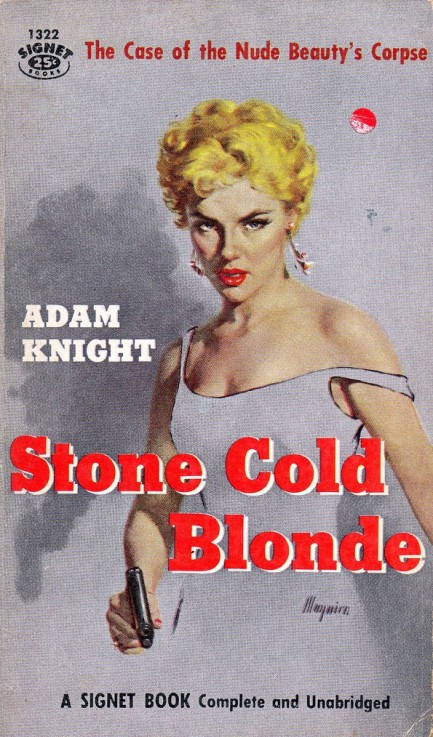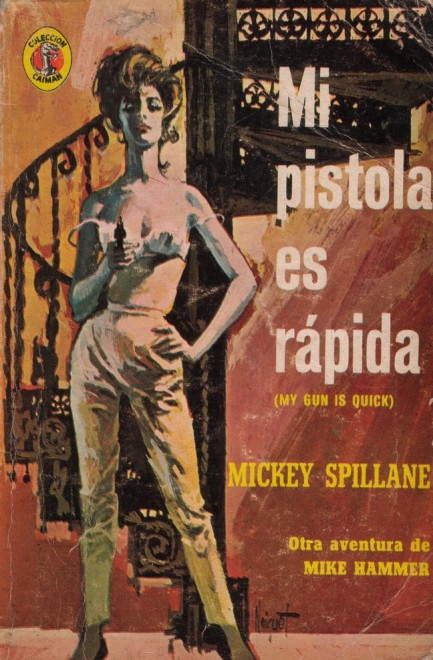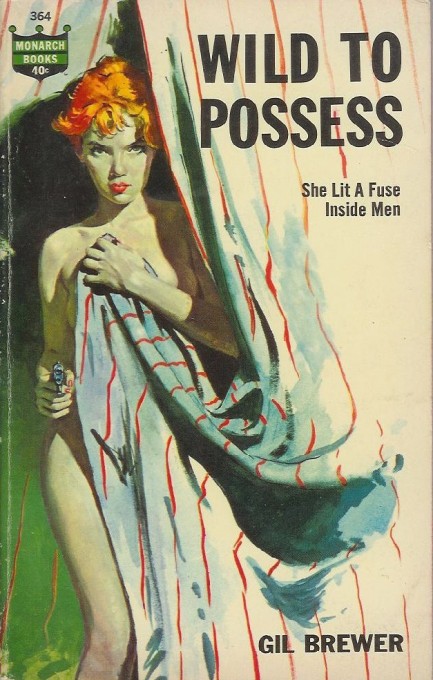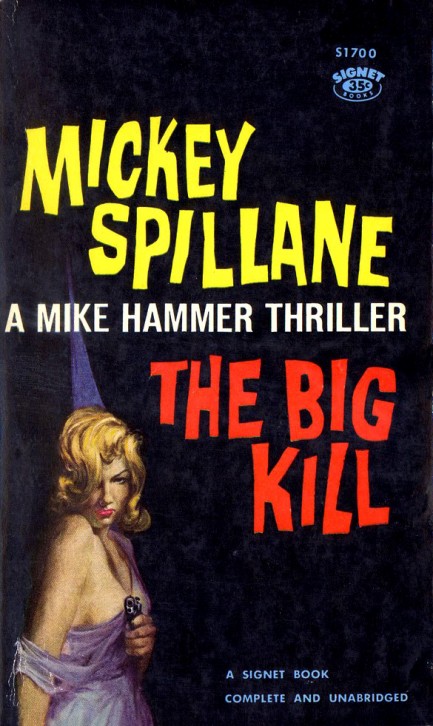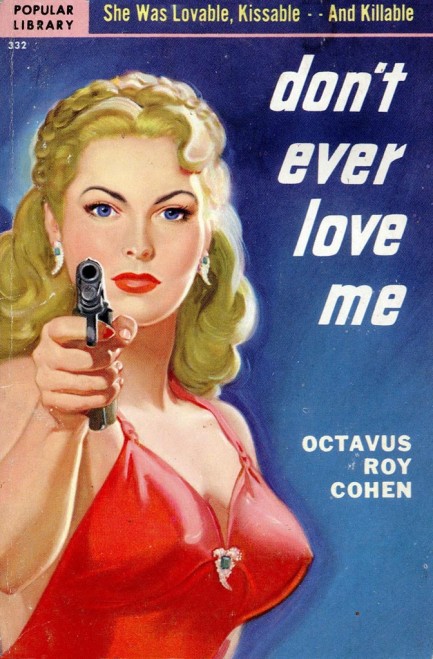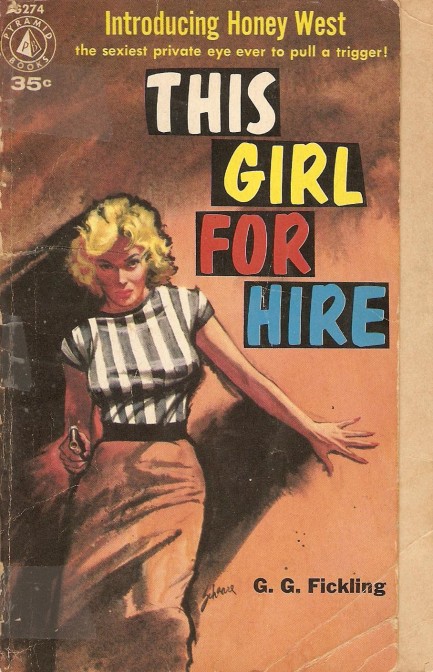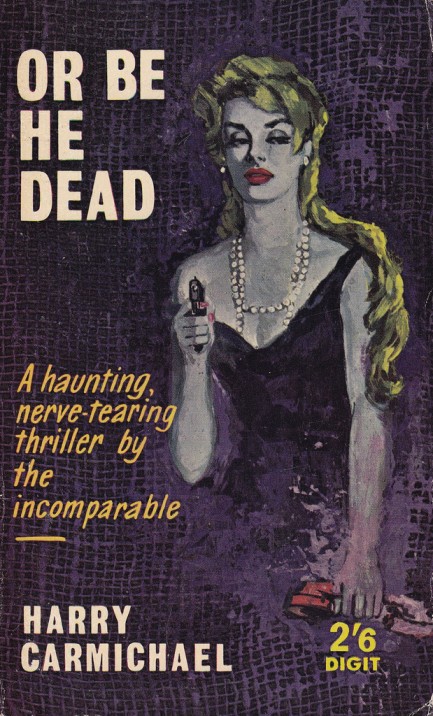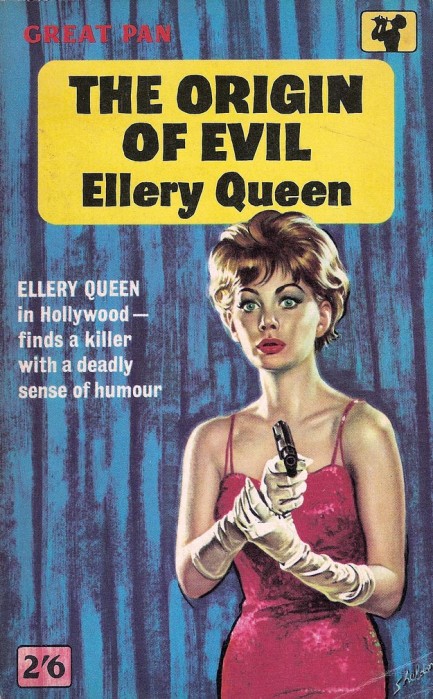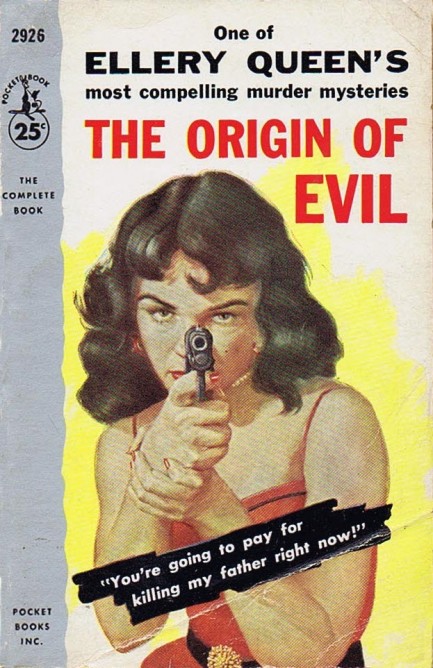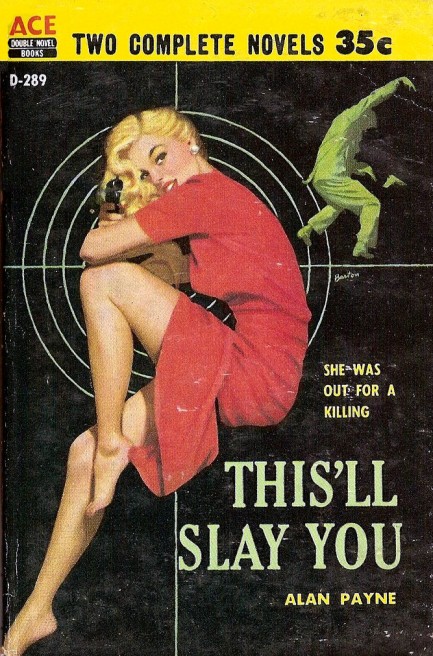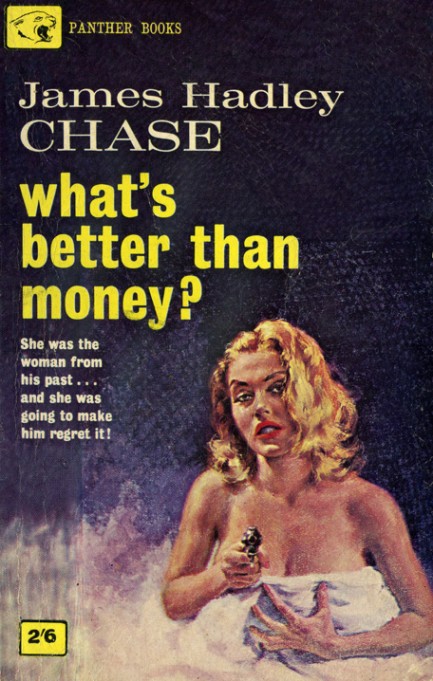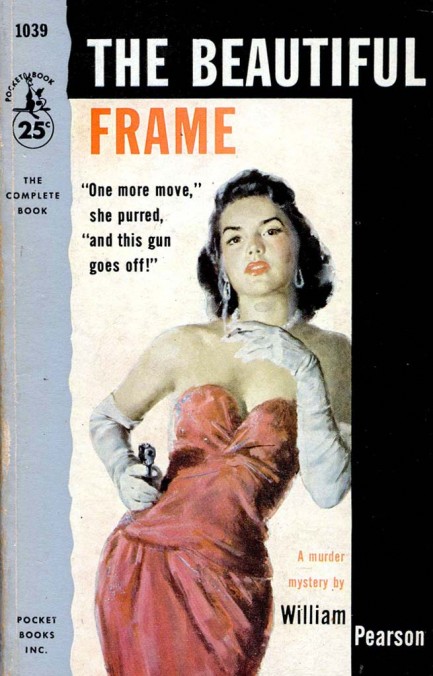| Vintage Pulp | Jul 21 2022 |

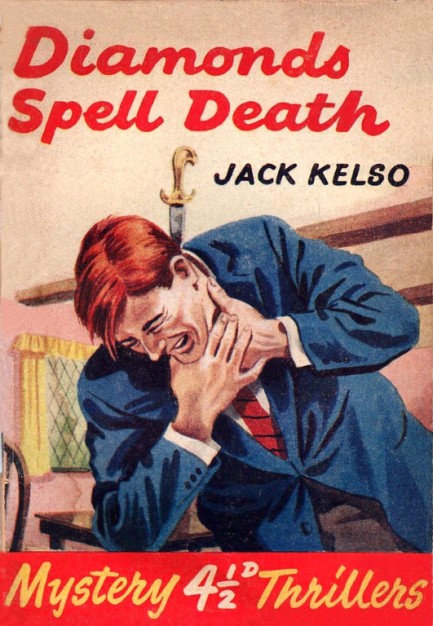
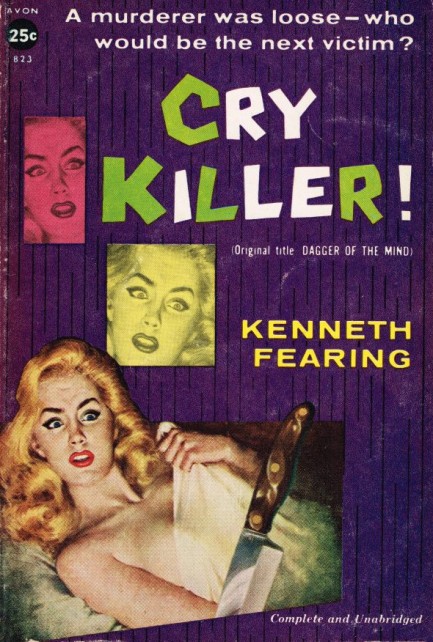

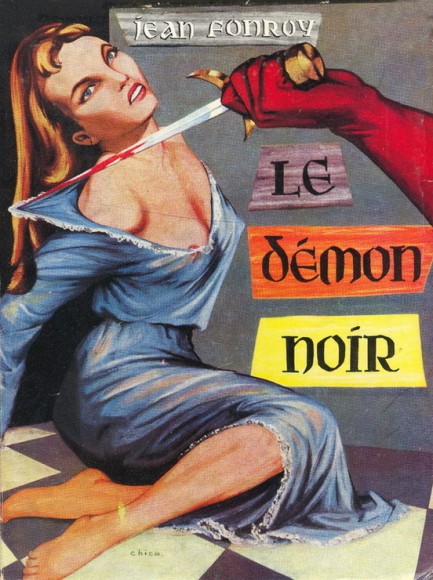
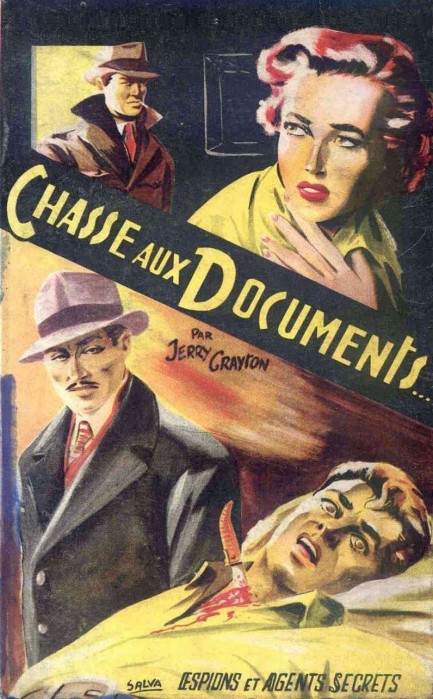
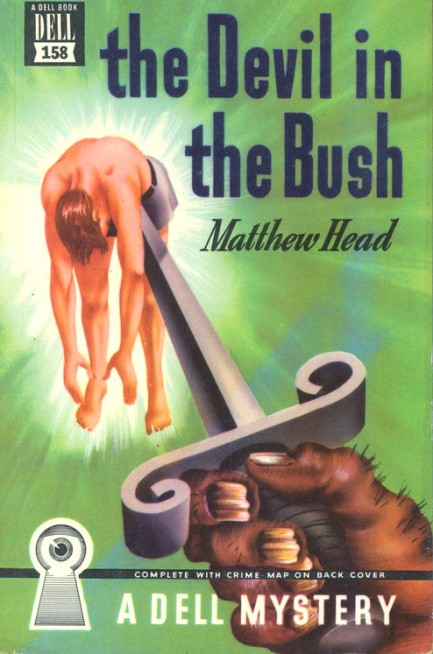
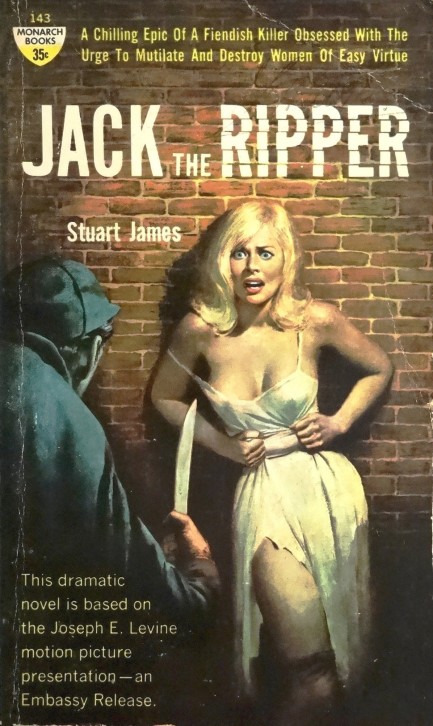

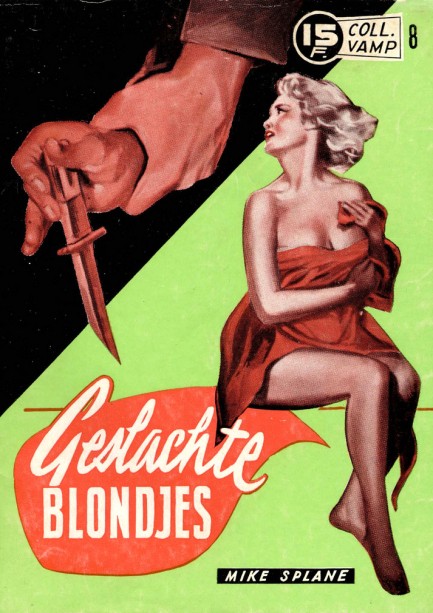
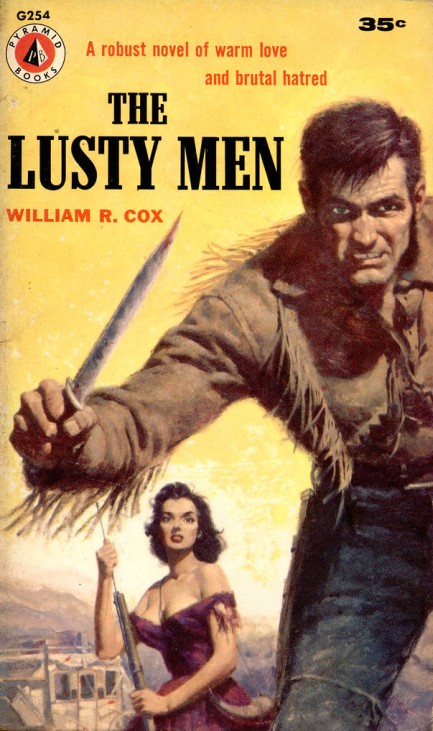
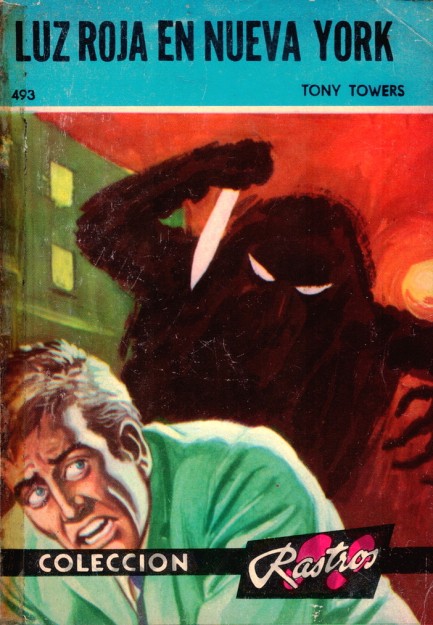
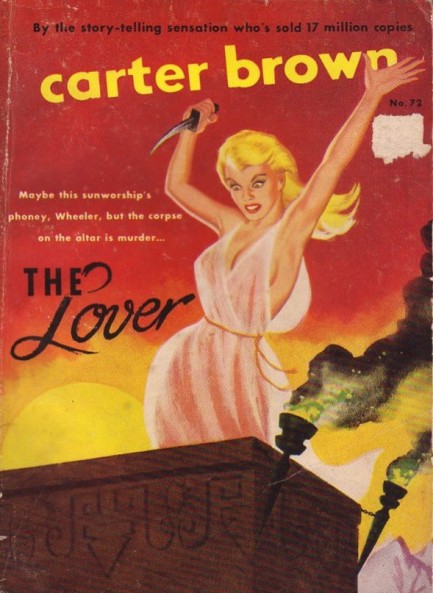
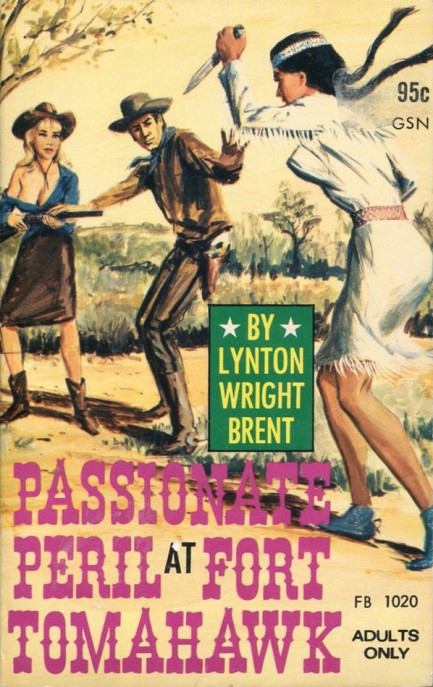
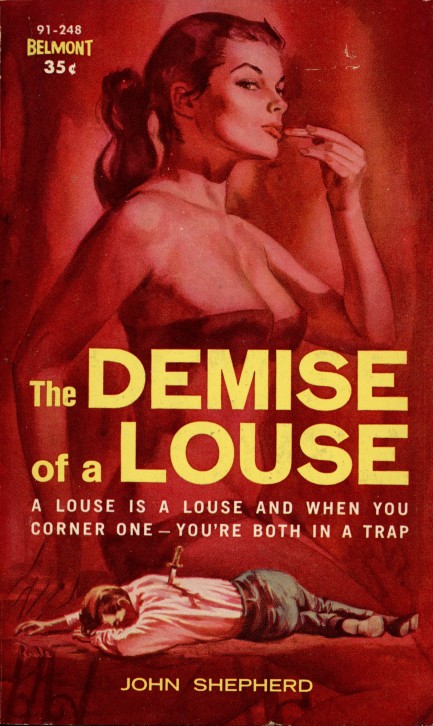
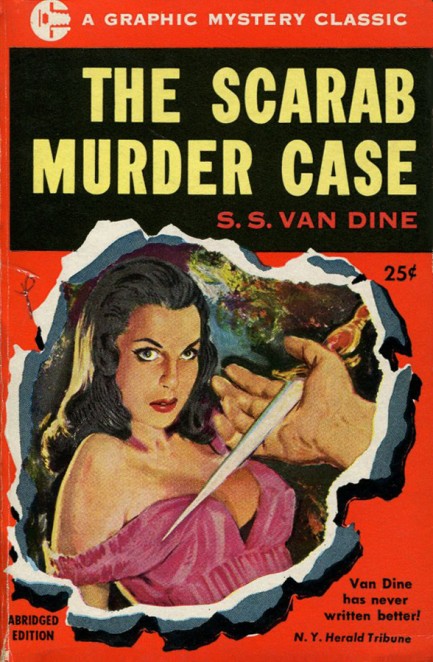

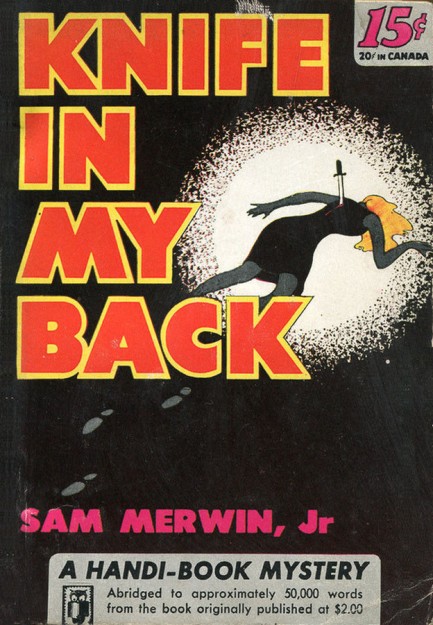
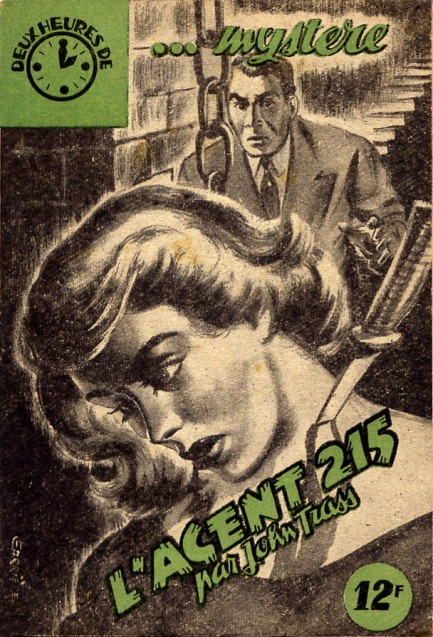
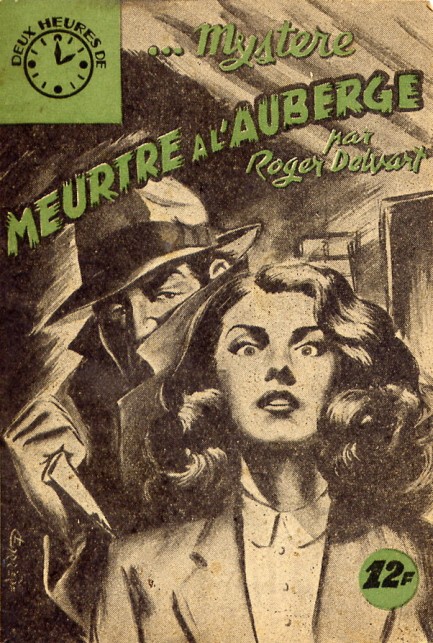
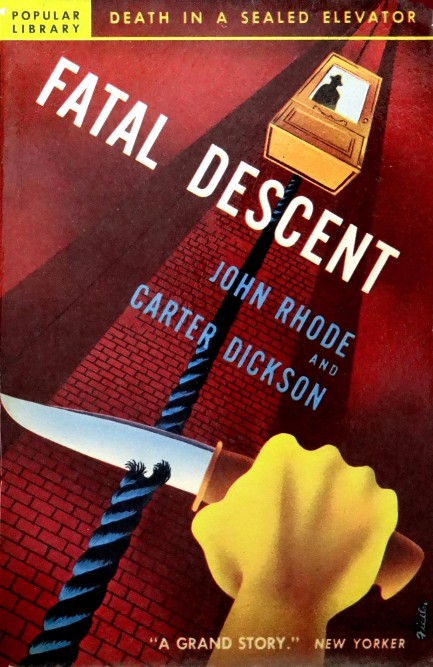
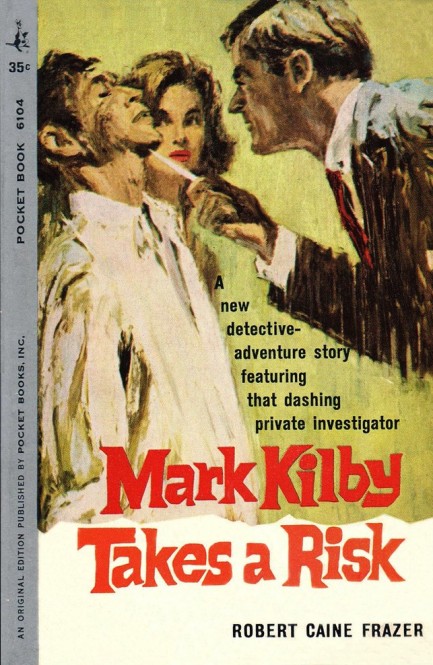
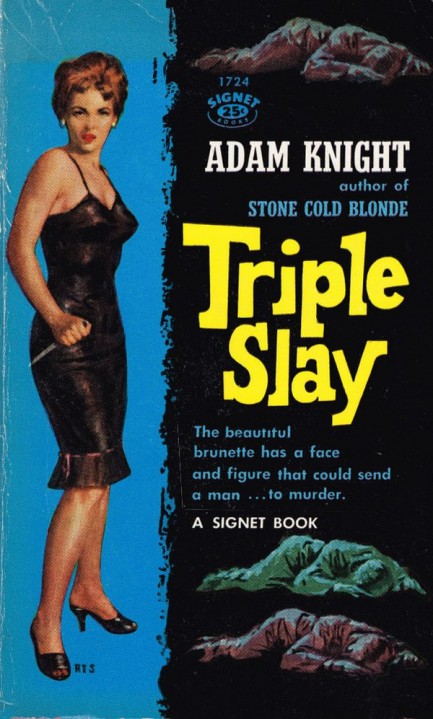
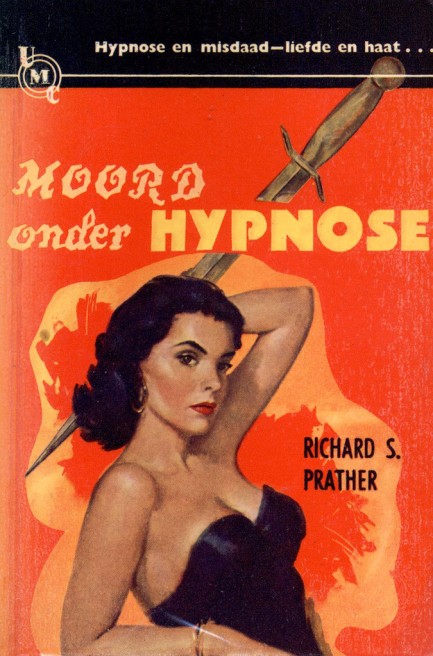
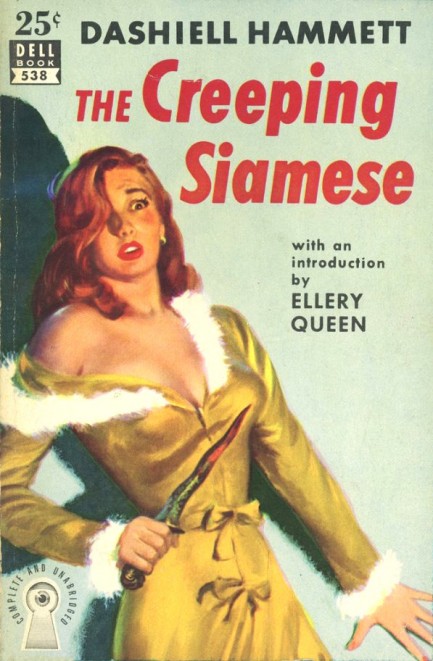
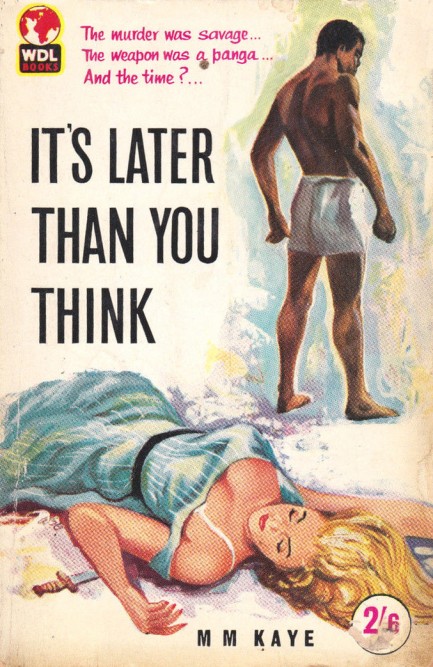
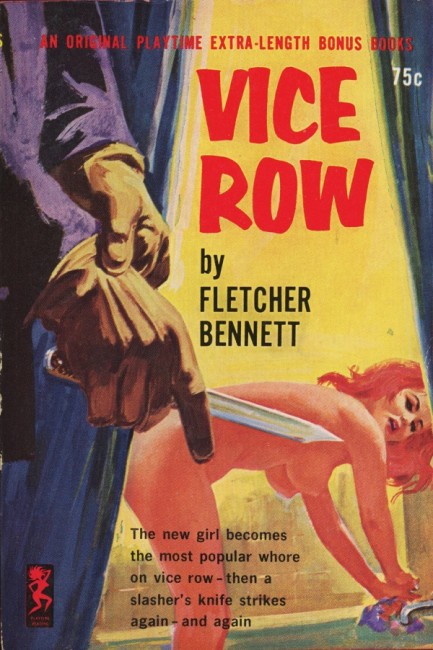
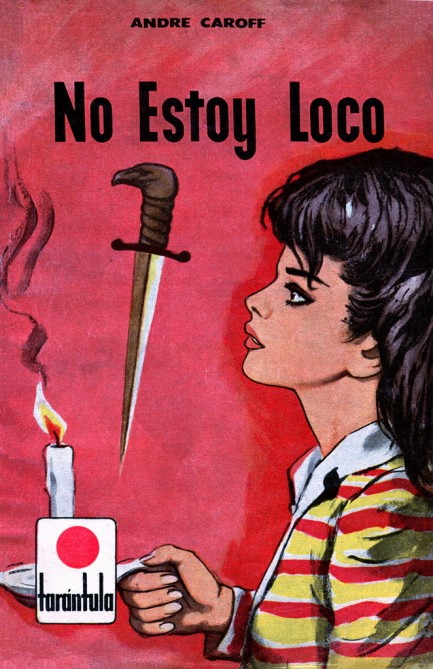
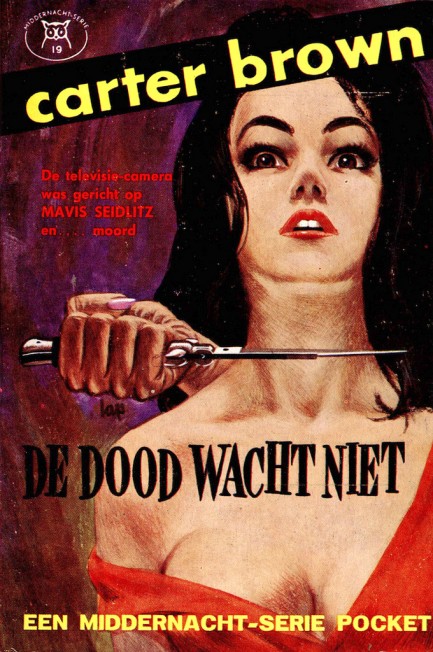
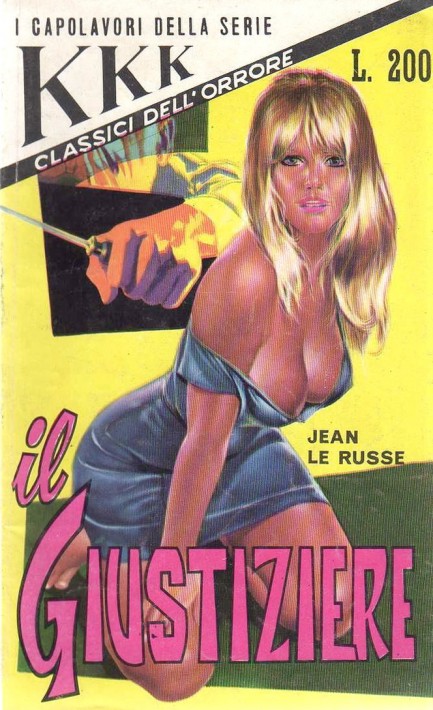
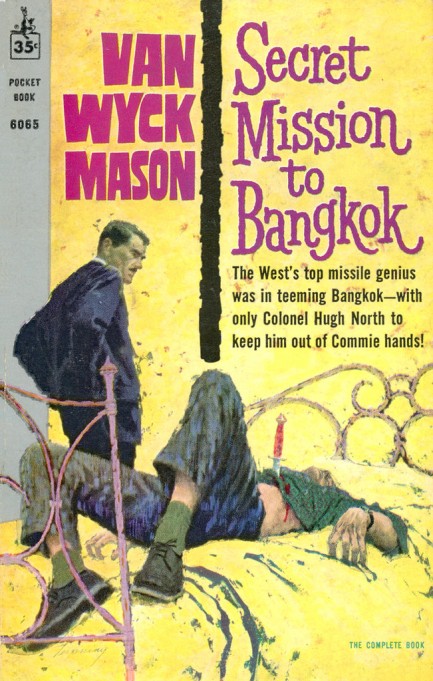
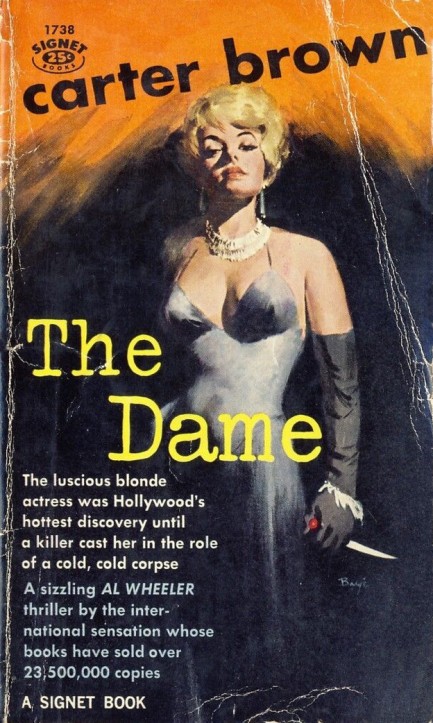
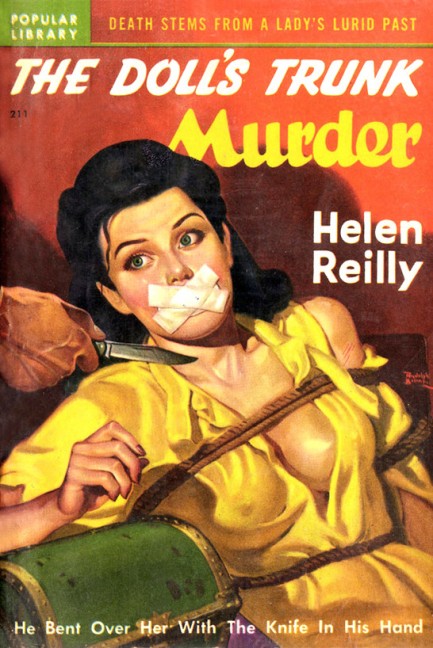
| Vintage Pulp | Apr 18 2022 |

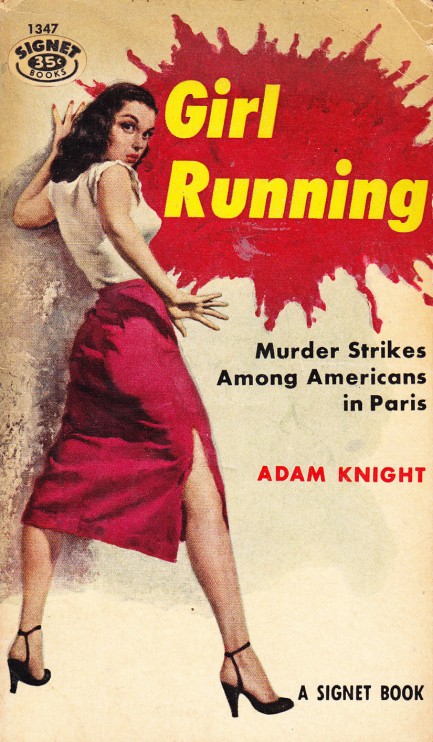
| Vintage Pulp | Nov 27 2021 |


Carlo Jacono painted this brilliant cover for La ragazza che scappa, or “the girl who runs away,” written by American author Adam Knight, aka Lawrence Lariar, for Ponzoni Editore's series Gialli Canarino, with the translation chores handled by Lydia Lax. We read a Knight book a while back, weren't impressed, and forgot about him, but here he is earning a translation into Italian. Does that mean the book is good? We've always assumed without evidence that translations were an indicator of quality, but now we have doubts. Or maybe that limp Knight yarn we read wasn't typical of his work. La ragazza che scappa was originally published in 1956 in the U.S. as Girl Running. We could probably find it if we wanted to, so we will actually consider picking up a copy if it's out there cheap. We're just curious enough.
| Vintage Pulp | Feb 6 2020 |

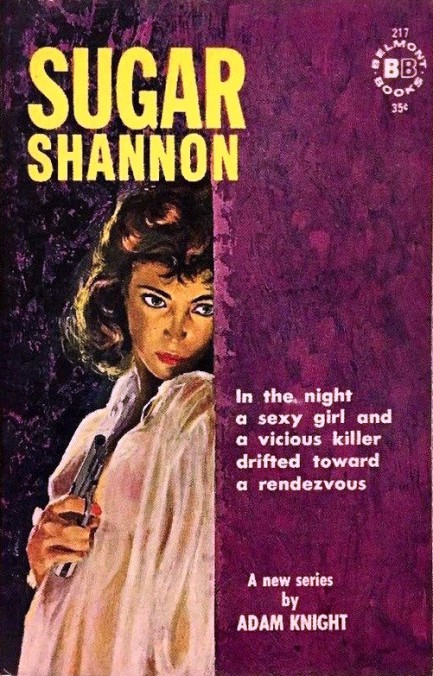
This eye-catching cover for Adam Knight's 1960 mystery novel Sugar Shannon was painted by an uncredited artist. The image lured us toward a purchase, and reading the book we immediately discovered that the main character is supposed to be a sort of Honey West clone. We didn't think much of This Girl for Hire, the book that introduced West to the world, so a derivative version was probably never destined to thrill us. And indeed, the whole thing—which involves the title character and her sidekick Gwen trying to solve two murders in the New York City art underground—is pretty silly, and more than a little condescending. For instance, Knight makes constant references to Sugar's “girlish instincts,” “womanly intuition,” and “feminine corpuscles" (huh?), suggesting his investigative reporter heroine works less by logic than by a sort of gender-based magic. Sugar Shannon was supposed to be the first book of a series, but it turned out to be a series of one. That says it all.
| Vintage Pulp | Oct 6 2018 |

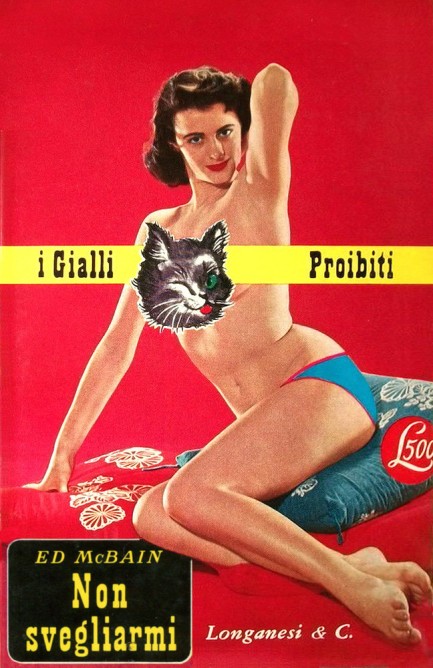

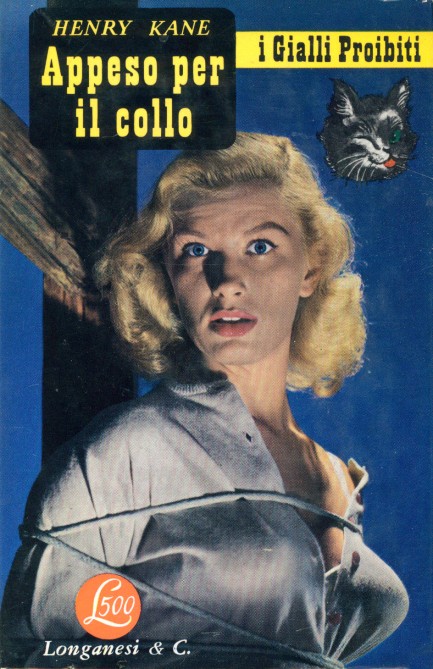


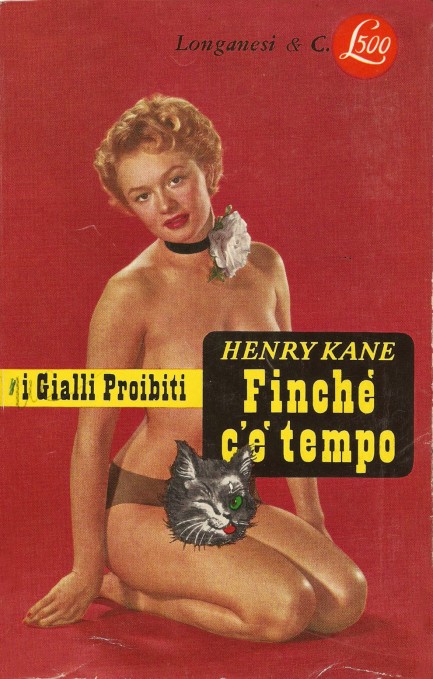
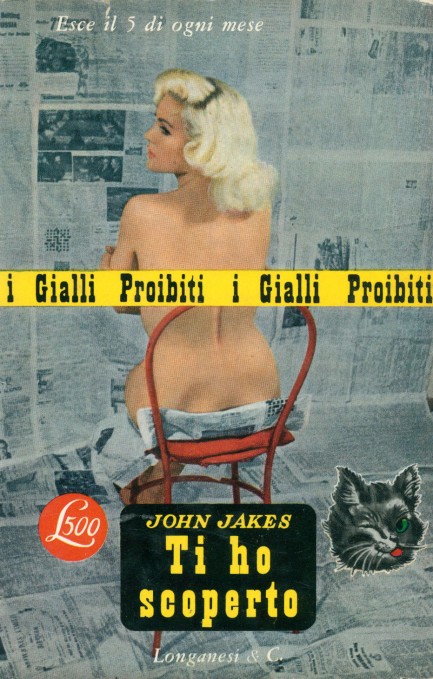
| Vintage Pulp | Jul 17 2015 |

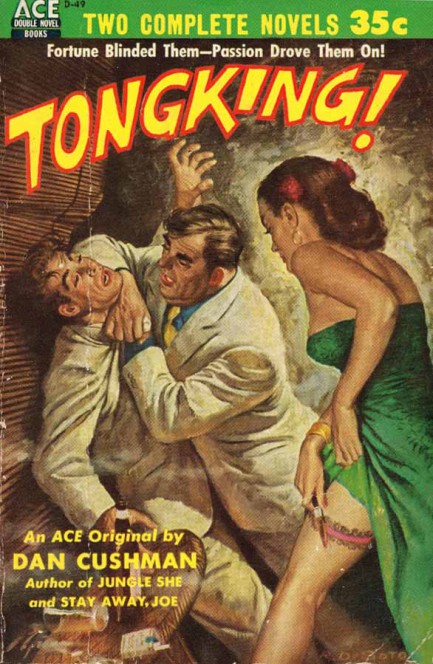
We have another collection today as we prepare to jet away on vacation with the girls. Since the place we’re going is known for rowdy British tourists (what place isn’t known for that?), we thought we’d feature some of the numerous paperback covers featuring fights. You’ll notice, as with our last collection, the preponderance of French books. Parisian publishers loved this theme. The difference, as opposed to American publishers, is that you almost never saw women actually being hit on French covers (we’d almost go so far as to say it never happened, but we’ve obviously not seen every French paperback ever printed). The French preferred man-on-man violence, and when women were involved, they were either acquitting themselves nicely, or often winning via the use of sharp or blunt instruments.
Violence against women is and has always been a serious problem in the real world, but we’re just looking at products of the imagination here, which themselves represent products of the imagination known as fiction. Content-wise, mid-century authors generally frowned upon violence toward women even if they wrote it into their novels. Conversely, the cover art, stripped of literary context, seemed to glorify it. Since cover art is designed to entice readers, there’s a valid discussion here about why anti-woman violence was deemed attractive on mid-century paperback fronts, and whether its disappearance indicates an understanding of its wrongness, or merely a cynical realization that it can no longer be shown without consequences. We have another fighting cover here, and you may also want to check out our western brawls here.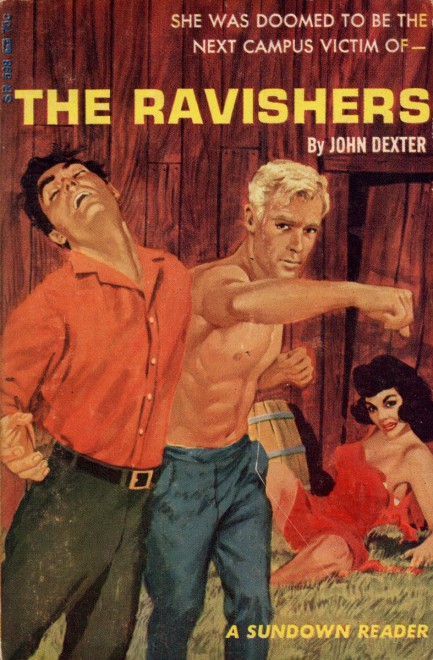
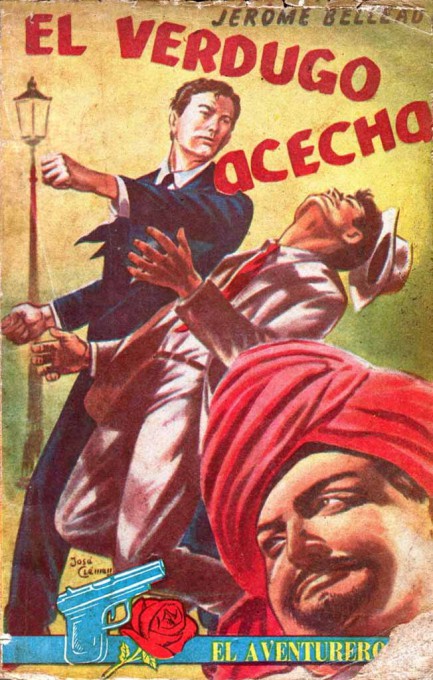
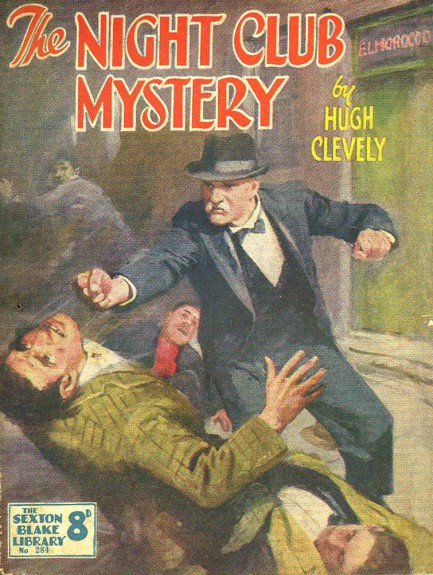

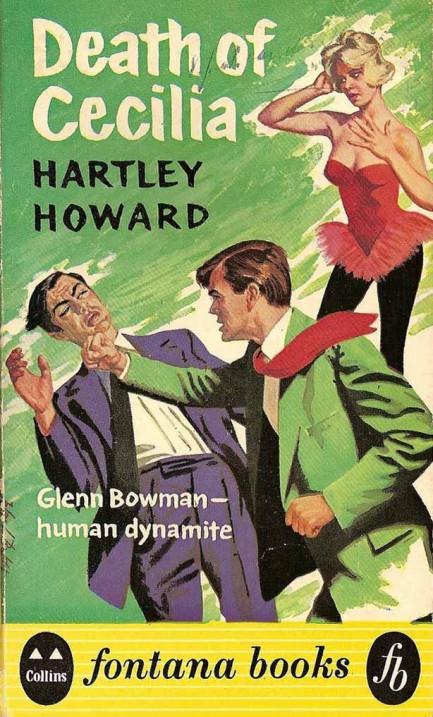
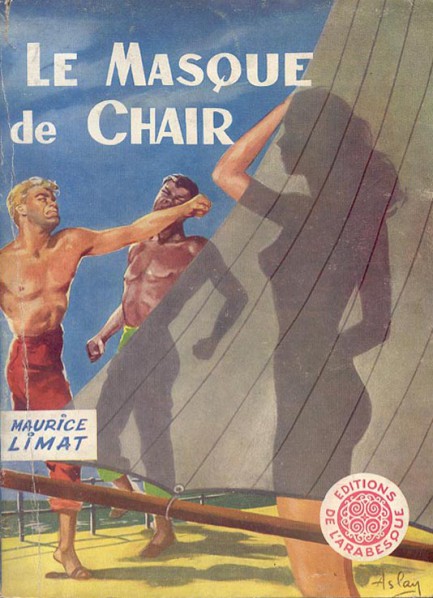
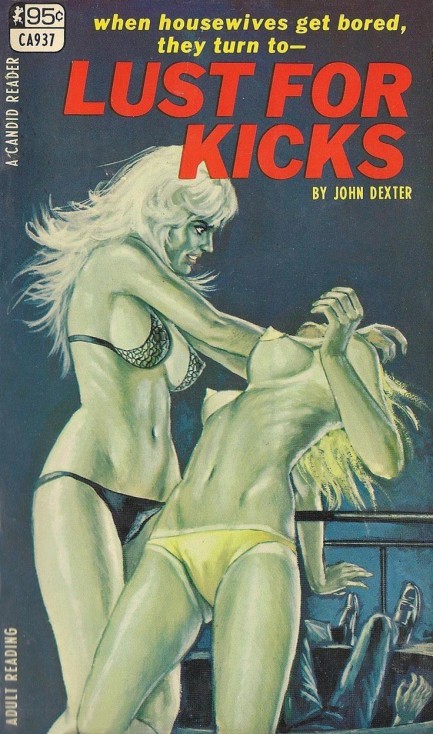
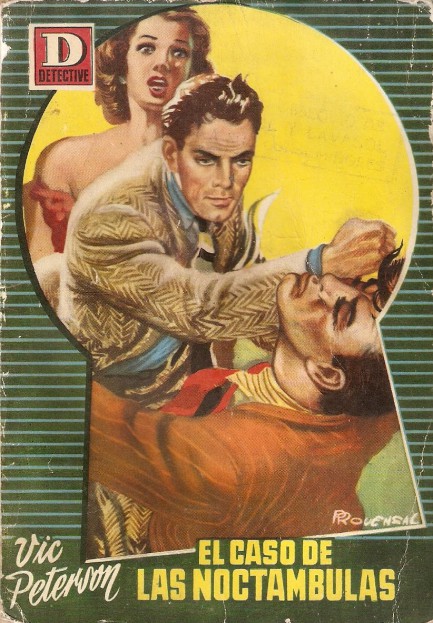
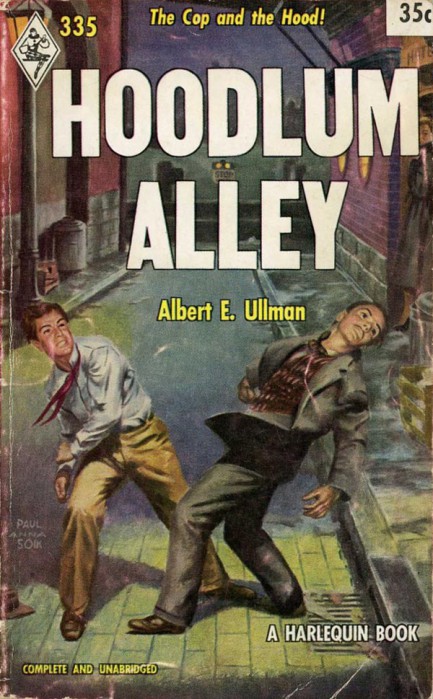
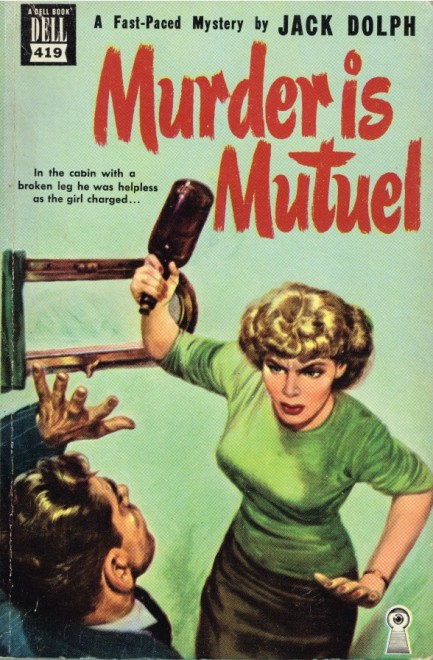
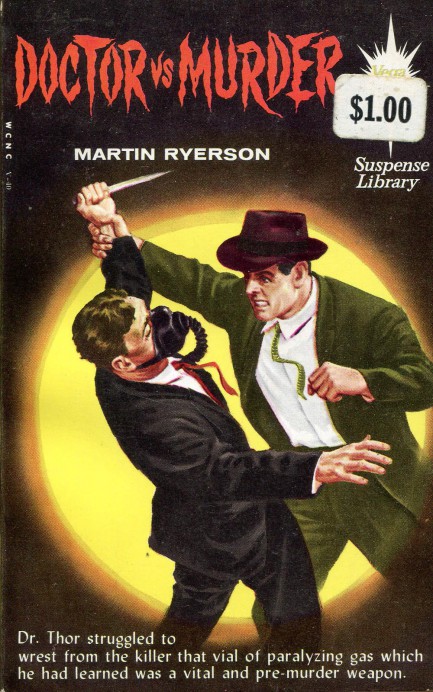
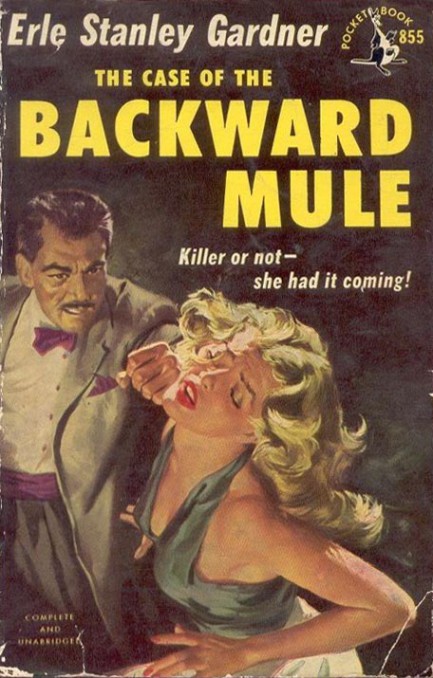
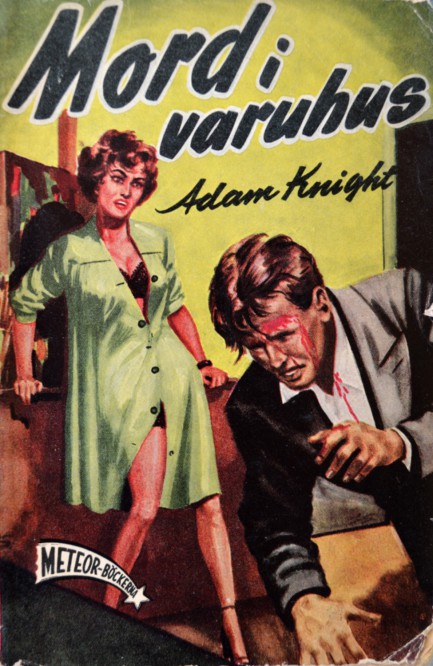

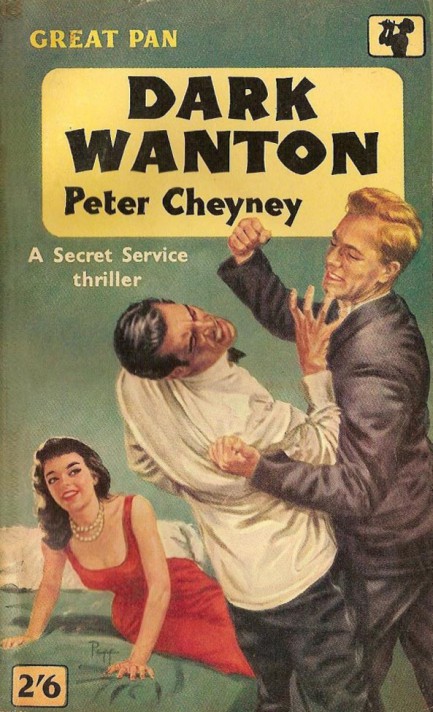
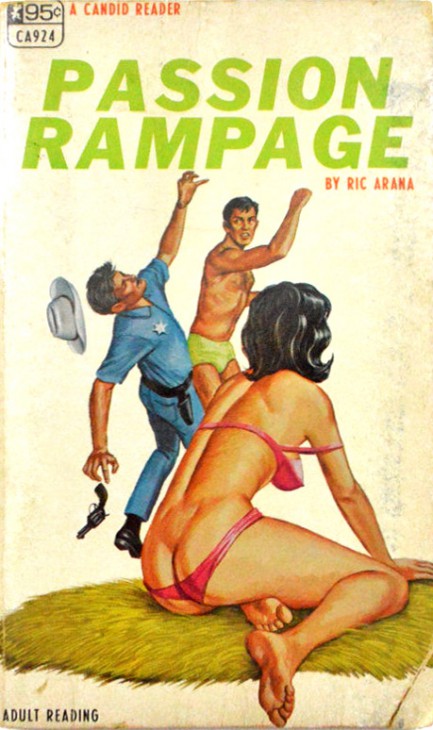
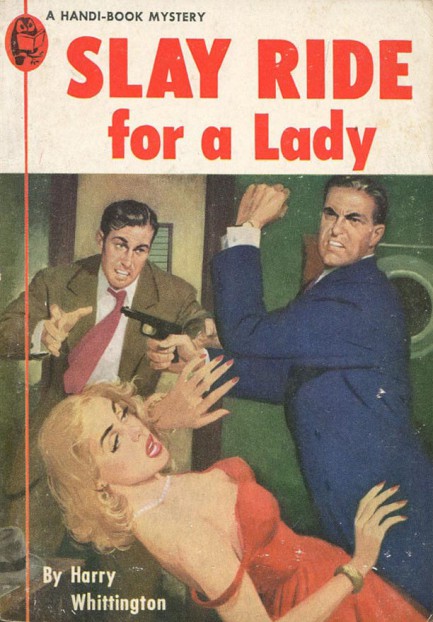
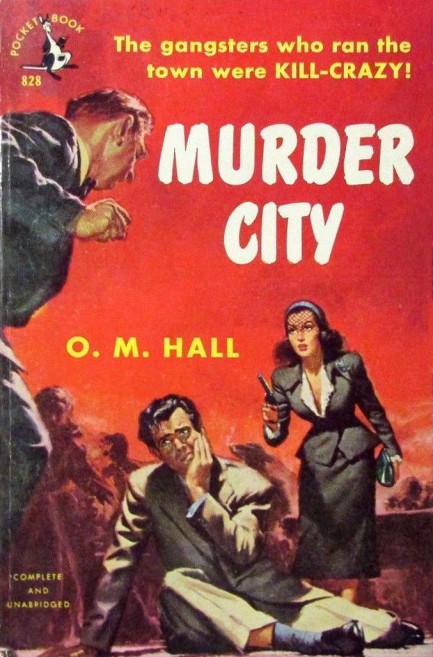
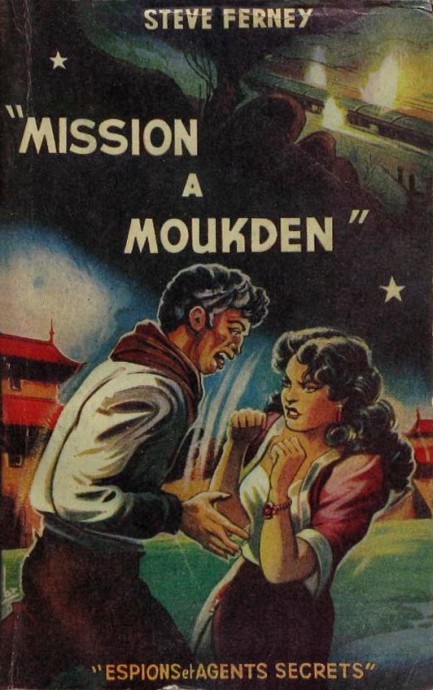
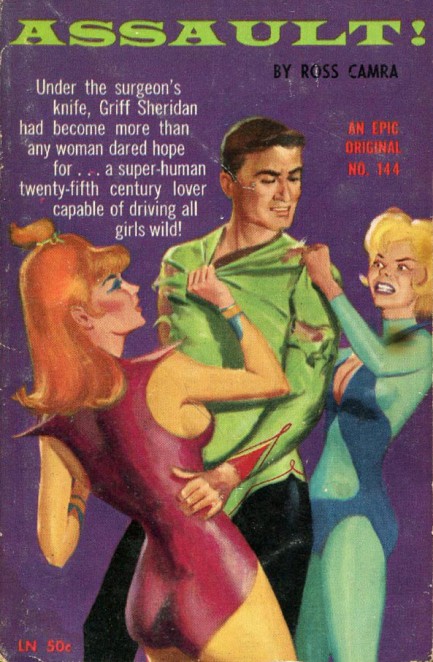
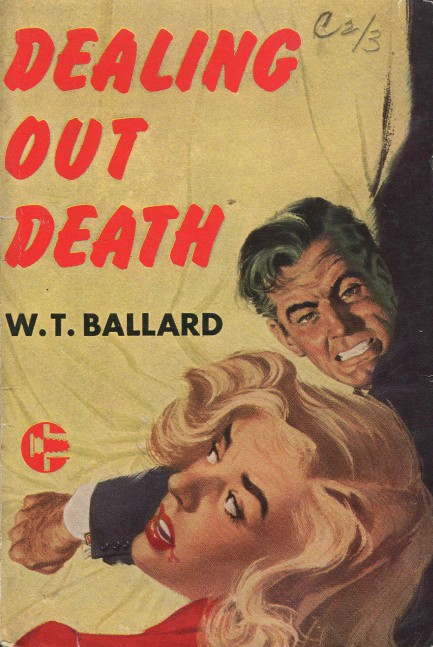
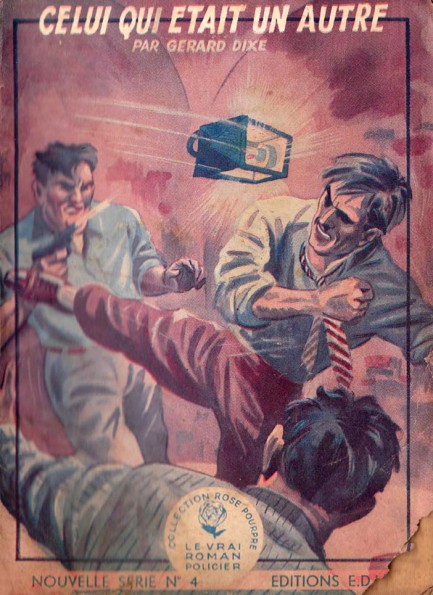
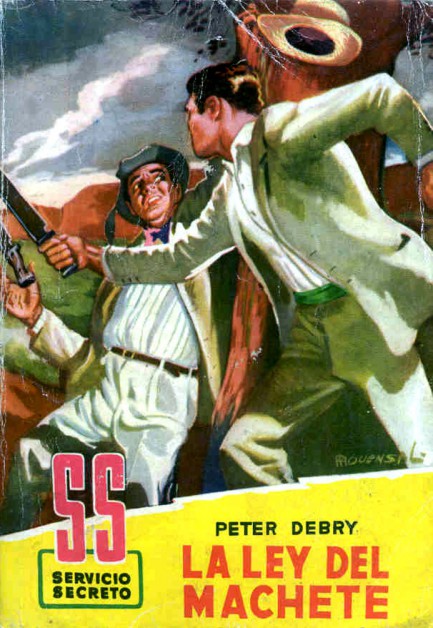
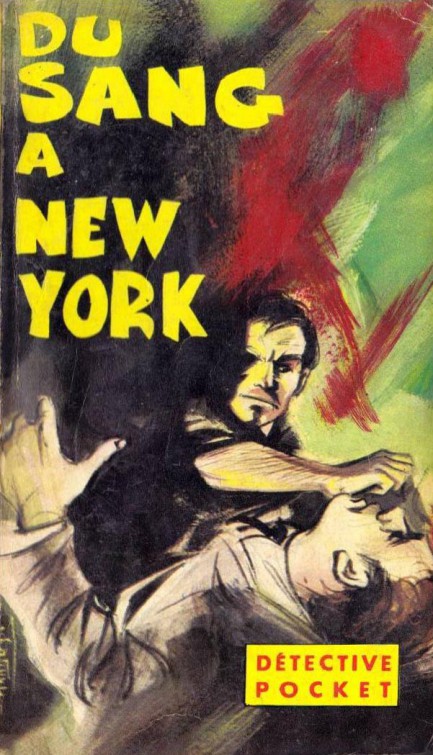
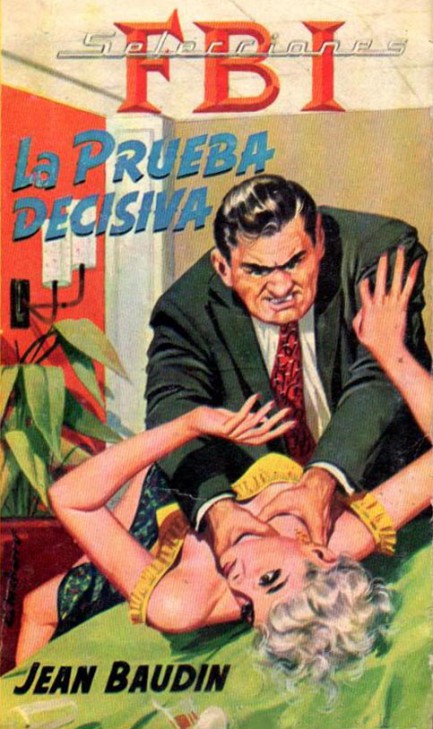
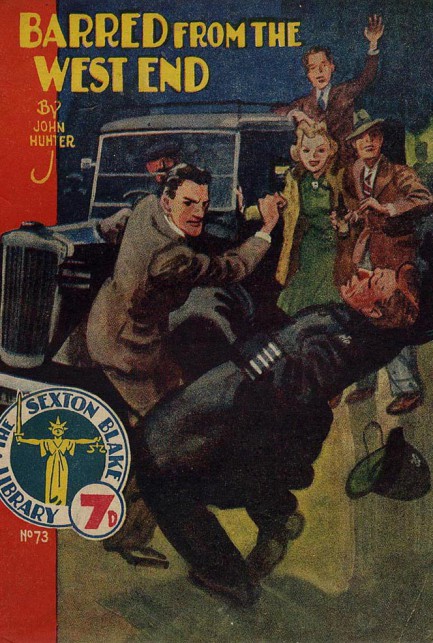
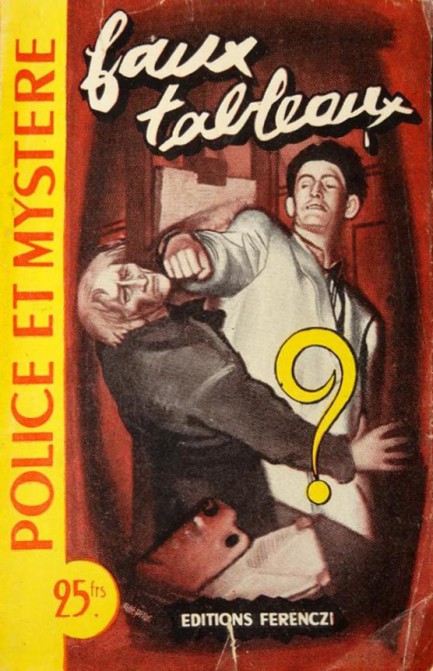

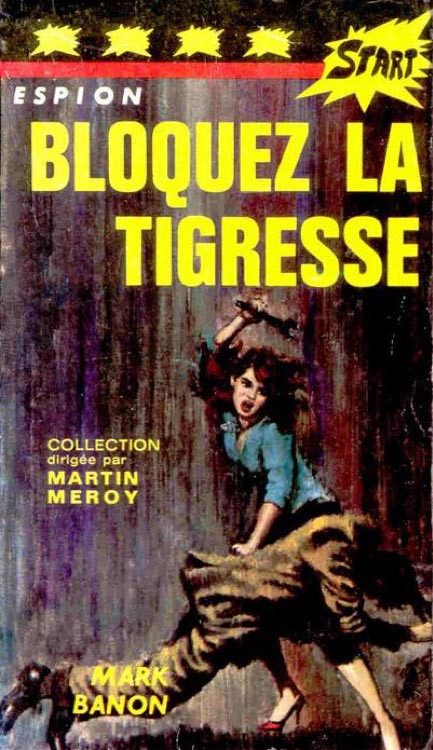

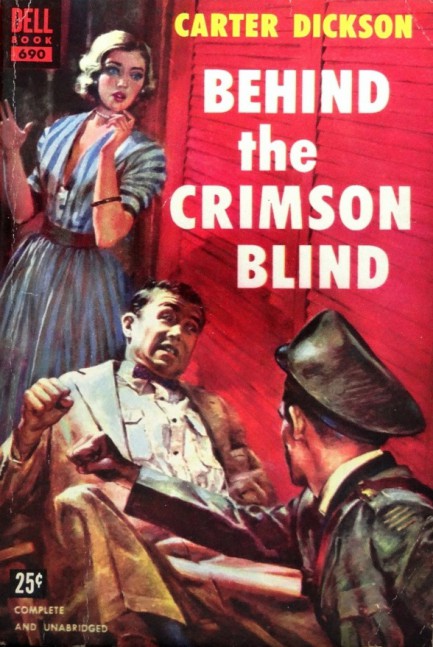
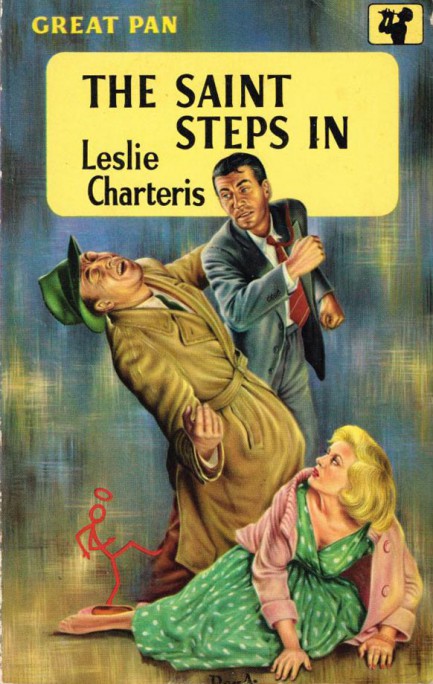
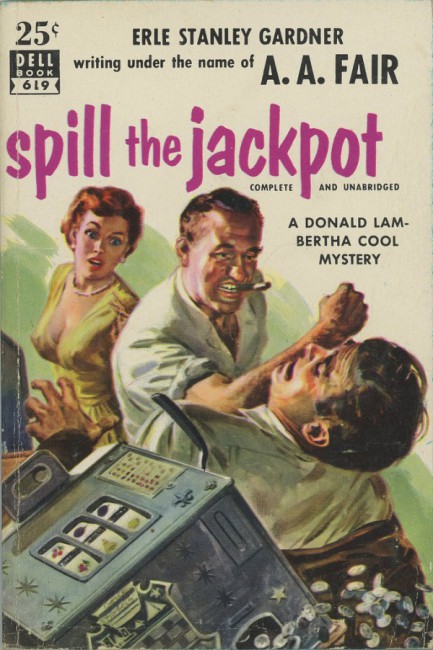
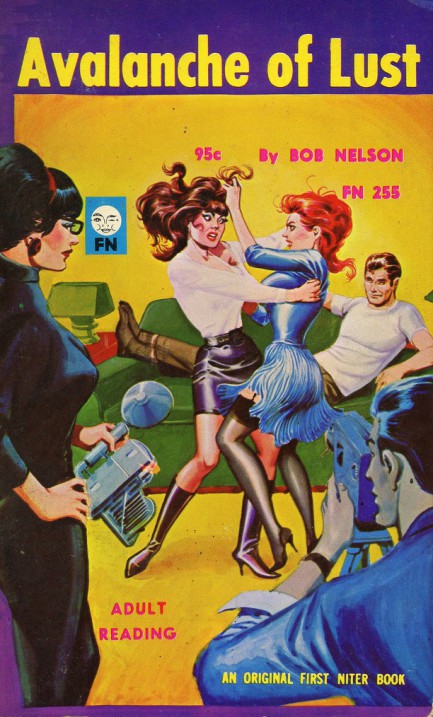
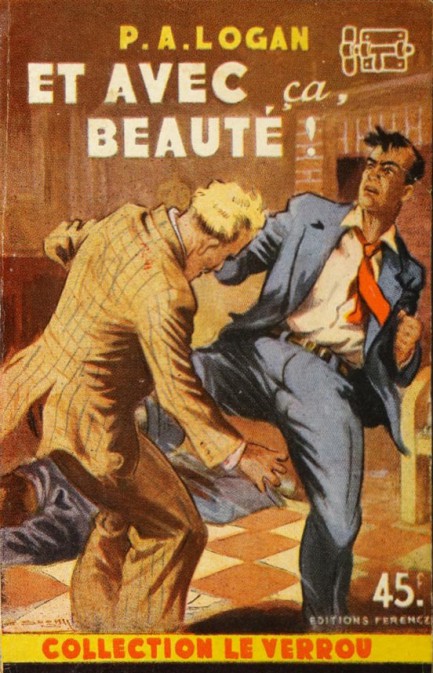
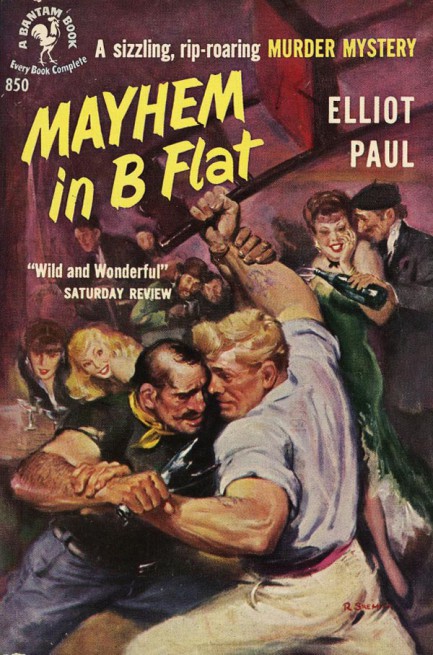
| Vintage Pulp | Mar 29 2012 |

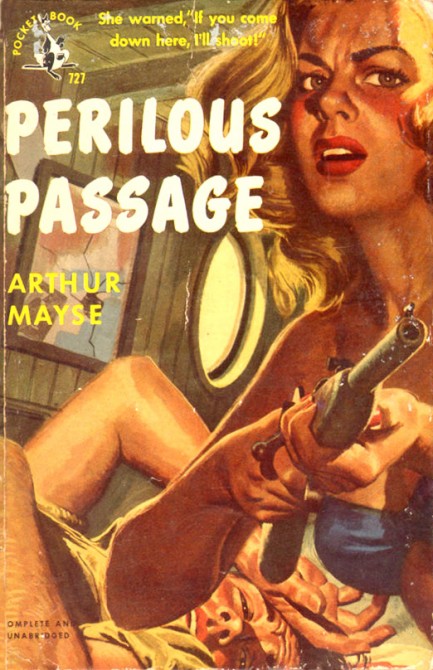
We love vintage paperback covers featuring armed women. But we especially love them when the women are directing their attention toward the viewer. Since pulp style literature is read primarily by men, such illustrations speak implicitly about a man’s thwarted expectations, and conversely of threatened women turning the tables to become empowered. We see this above, where a beleaguered woman defends her helpless man against an enemy we can't see because we're living inside his body. Below are thirteen more examples of women menacing you the viewer, with art by James Avanti, Robert Maguire, Harry Schaare, Rudolph Belaski, Harry Barton, and others. Thanks to flickr.com for some of these.